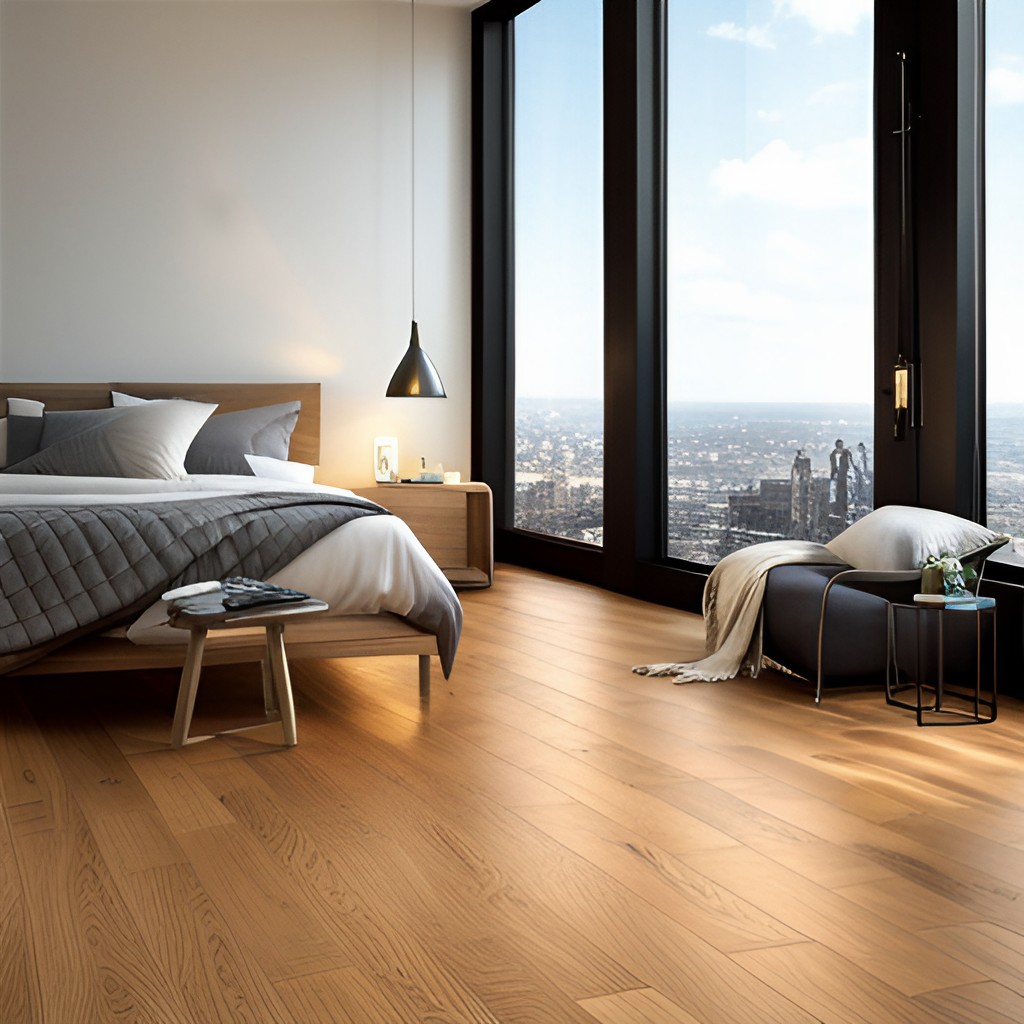Selecting the right flooring for your home is a critical decision that influences both the aesthetic appeal and functionality of your space. With a myriad of options available, understanding the distinct characteristics of each type can help ensure you make an informed choice that aligns with your lifestyle, budget, and design preferences.
Among the popular flooring options, oak and hardwood stand out for their durability, classic beauty, and value addition to the property.
This guide will delve into the key differences between oak and hardwood flooring, providing insights to help you determine the best fit for your needs.
Choosing the right type of flooring can significantly impact the comfort, maintenance, and overall ambiance of your home, making it an essential aspect of any interior design project.
1. Wood Type
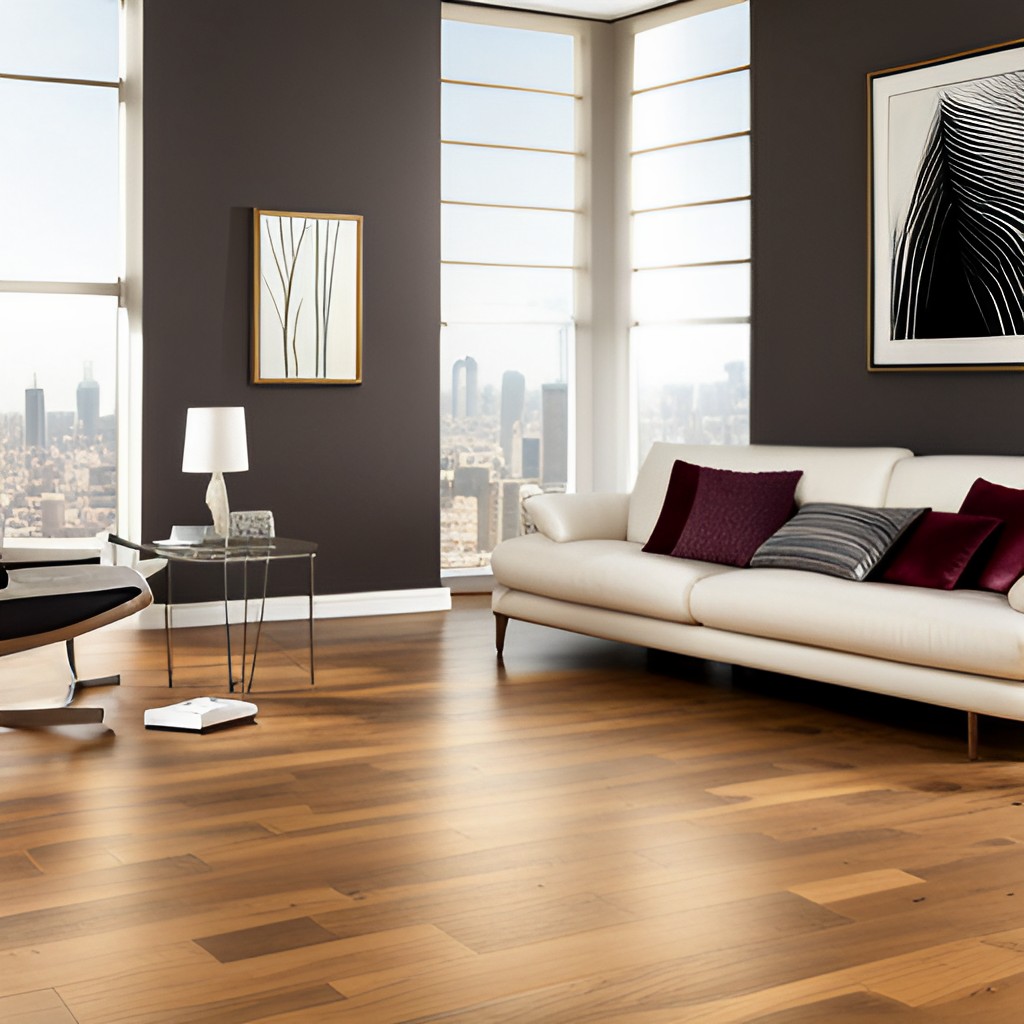
What Constitutes Oak and Hardwood
Oak is a specific type of hardwood that comes from oak trees, which are primarily found in the Northern Hemisphere. Known for its strength, durability, and distinct grain patterns, oak wood has been a popular choice for flooring for centuries.
There are two main types of oak used in flooring: red oak and white oak. Red oak has a warm, reddish hue and a more prominent grain pattern, while white oak tends to be more stable with a subtler, yellowish tone and finer grain.
Hardwood, on the other hand, encompasses a broad category of wood derived from deciduous trees, such as maple, cherry, walnut, and, of course, oak.
These woods are characterized by their density and hardness, making them highly durable and wear-resistant. Each type of hardwood has its unique attributes, grain patterns, and color variations, allowing for a wide range of aesthetic possibilities in flooring solutions. While all oak is hardwood, not all hardwood is oak.
Understanding these distinctions is crucial when selecting flooring, as the specific properties of each type can greatly influence the final look, feel, and functionality of your floors.
Differences in Tree Species and Origins
Oak trees are predominantly found in the Northern Hemisphere, especially in regions with temperate climates such as North America, Europe, and parts of Asia. Red oak trees (Quercus rubra) and white oak trees (Quercus alba) are native to North America, with distinct differences in their wood properties.
Red oak is recognized for its rapid growth, making it widely available, while white oak grows more slowly, resulting in tighter growth rings and increased density. This difference in growth rates contributes to the variations in grain patterns and stability between the two types of oak.
Hardwood trees, by contrast, encompass a variety of species that can be found in diverse geographical regions across the globe.
For instance, maple trees are native to North America and parts of Europe and Asia, while cherry trees are found in North America and Europe. Walnut trees also span across multiple continents, including the Americas and Europe.
The diverse origins of these hardwood species mean that each one uniquely adapts to its environment, leading to distinct wood characteristics such as grain patterns, colors, and levels of hardness.
Geographical origins affect not only the aesthetic properties of the wood but also its performance.
For example, hardwoods sourced from colder climates typically grow slower, resulting in denser, more durable wood. On the other hand, hardwoods from warmer regions might grow faster but can be less dense and slightly softer.
This variety in tree species and origins provides a plethora of options for flooring, enabling homeowners and designers to select wood that aligns with both their aesthetic preferences and functional needs.
2. Appearance
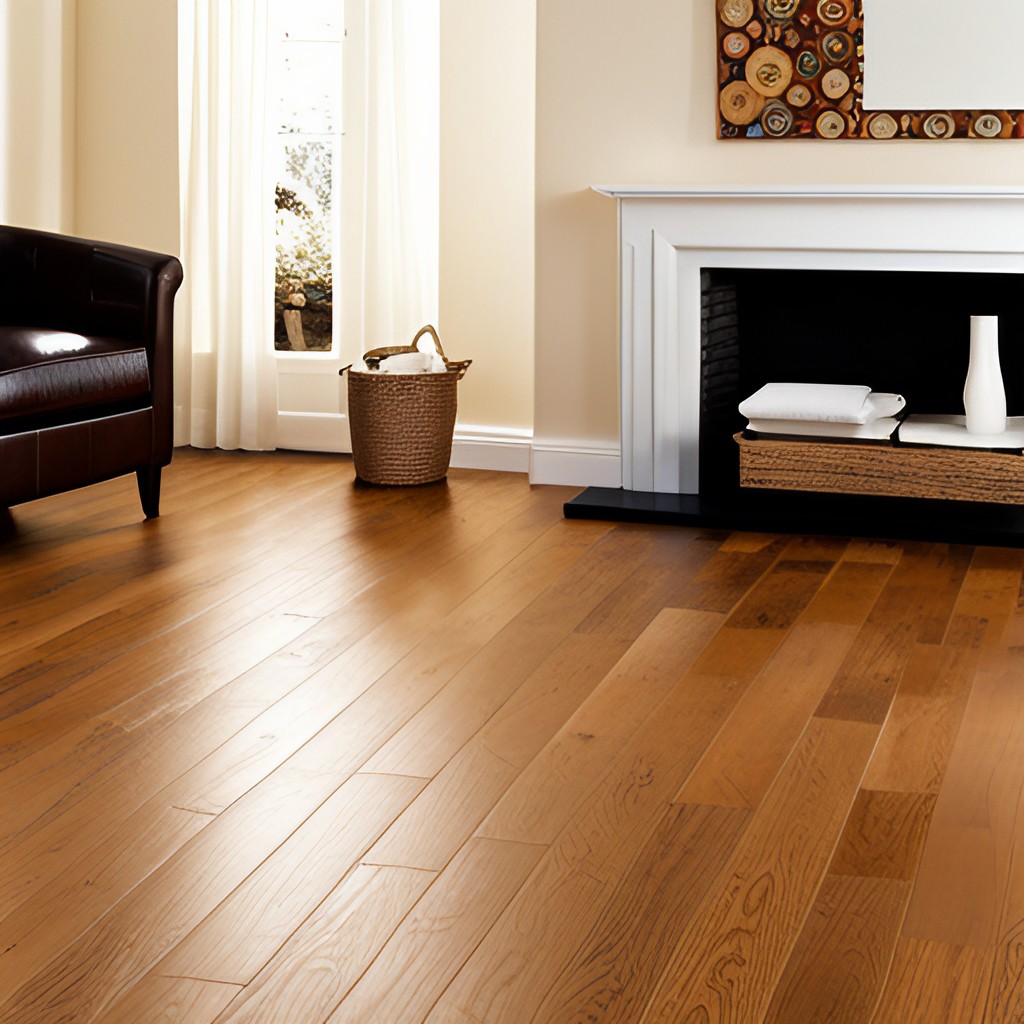
Grain Patterns and Textures
The grain patterns and textures of hardwoods significantly influence their visual attractiveness and usability. Hardwood species like oak, ash, and hickory have distinct, prominent grain patterns that add character to flooring, making it a focal point in any room.
In contrast, woods such as maple and cherry tend to have softer, more subtle grains, contributing to a sleek and refined aesthetic. The texture of the wood, whether it is fine, medium, or coarse, also plays a crucial role in the overall feel and appearance of the finished product.
Color Variations
Color variations among hardwood species provide a broad palette for designers and homeowners. For instance, the rich, deep tones of walnut contrast sharply with the lighter, warmer hues of maple and white oak.
Cherry wood, known for its smooth, reddish-brown coloration, can add a luxurious touch to interiors. The natural aging process of wood can also alter its color, often enhancing its richness and depth over time.
This dynamic range of color possibilities allows for endless creativity in matching wood flooring with interior décor.
Visual Appeal and Design Considerations
When selecting hardwood flooring, visual appeal and design considerations are paramount. The choice of wood can dramatically influence the ambiance of a space. Light-colored woods can make a room appear larger and more airy, while darker woods can offer a sense of coziness and elegance.
The finish applied to the wood, whether matte, satin, or glossy, further affects its aesthetic and practical properties.
Additionally, the plank width and installation pattern, such as herringbone or diagonal, can transform the visual impact of the flooring, making it a versatile element in interior design.
3. Durability
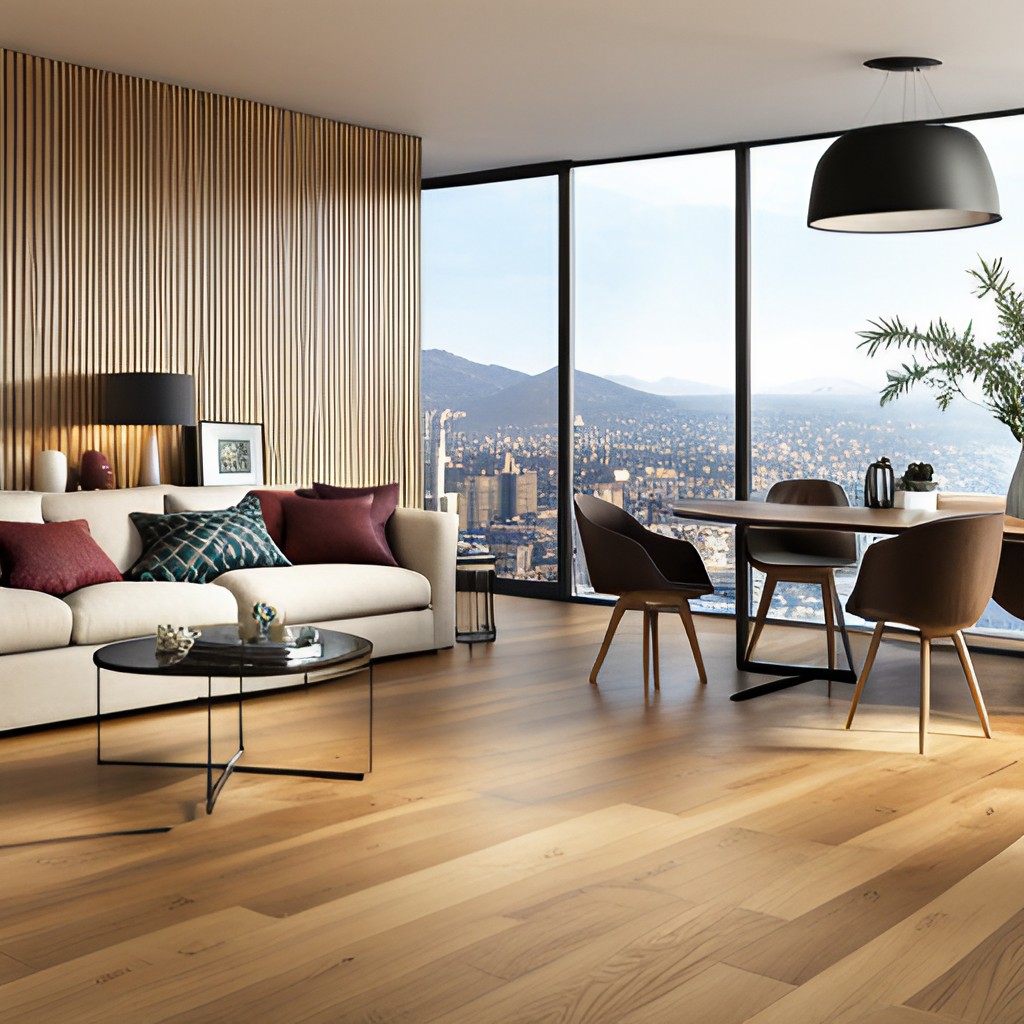
Hardness Levels
Hardness levels in hardwood flooring are an important consideration, as they determine the wood’s ability to withstand dents and scratches. The Janka Hardness Test is the standard method used to measure the resistance of wood species to wear and denting.
Woods such as oak, maple, and hickory rank highly on the Janka scale, making them suitable for high-traffic areas.
In contrast, softer woods like pine and fir are more prone to damage and may be better suited for areas with less foot traffic. Understanding the hardness levels of different wood species helps in selecting the right flooring to match the intended use and longevity needs.
Related Topic: Is Oak Flooring Sustainable? The Eco-Friendly Choice
Resistance to Wear and Tear
The resistance to wear and tear is a crucial factor when choosing hardwood flooring, especially in spaces subjected to frequent foot traffic, pets, or heavy furniture.
Some hardwoods possess a natural resistance to abrasion and scratches, while others may require protective finishes. Species like Brazilian cherry, teak, and oak offer excellent resistance to wear, making them ideal for busy households.
The type of finish applied whether polyurethane, oil-based, or water-based also plays a significant role in enhancing the wood’s resilience against daily wear and tear.
Regular maintenance, such as sweeping and the occasional refinishing, can greatly extend the life of the flooring.
Longevity and Maintenance Requirements
The longevity of hardwood flooring largely depends on the type of wood, the quality of installation, and the level of maintenance. Harder woods tend to last longer, but all hardwood floors can benefit from proper care.
Regular cleaning to remove dirt and grit, prompt attention to spills, and using area rugs in high-traffic areas can preserve the floor’s appearance. Periodic refinishing, which involves sanding down the surface and applying a fresh coat of finish, can rejuvenate the wood and extend its lifespan.
Additionally, keeping the indoor environment stable in terms of humidity and temperature can prevent issues like warping and gapping, ensuring the floors remain beautiful and functional for decades.
4. Cost
Initial Purchase Price
The initial purchase price of hardwood flooring can vary significantly depending on the species of wood, grade, and width of the planks. Exotic hardwoods like Brazilian cherry or ebony tend to be on the higher end of the price spectrum due to their durability and unique aesthetic appeal.
On the other hand, domestic woods like oak, maple, or hickory offer a more budget-friendly yet equally attractive option.
Factors such as plank width also play a role, with wider planks generally costing more due to their premium look and the greater amount of raw material required.
Moreover, opting for pre-finished planks can save time and money on installation, though they may come at a higher up-front cost compared to unfinished options.
Installation Costs
Installation costs for hardwood flooring can be influenced by various factors including the complexity of the layout, the type of subfloor, and whether any additional treatments are needed.
Professional installation ensures a high-quality finish and longevity, but it does come with an additional expense. Labor costs can vary by region and installer experience, with more intricate patterns like herringbone or parquet requiring greater skill and therefore incurring higher costs.
Additionally, if the subfloor needs preparation work such as leveling or moisture barriers, these will add to the overall costs.
Deciding between methods such as nail-down, glue-down, or floating installations can also affect the total expenditure.
Long-Term Value and Resale Impact
Investing in hardwood flooring can significantly enhance the long-term value of a property. Hardwood floors are highly desirable in the real estate market, often seen as a premium feature that can increase a home’s resale value.
Their timeless appeal and durability mean that they not only retain their beauty over the years but can also be refinished rather than replaced, which adds to their cost-effectiveness.
Homebuyers frequently appreciate the aesthetic and practical benefits of hardwood, which can translate to higher offers and faster sales when it comes time to sell the property.
Additionally, well-maintained hardwood flooring can contribute to the perceived quality and care of the home, making it an attractive option for prospective buyers.
5. Environmental Impact
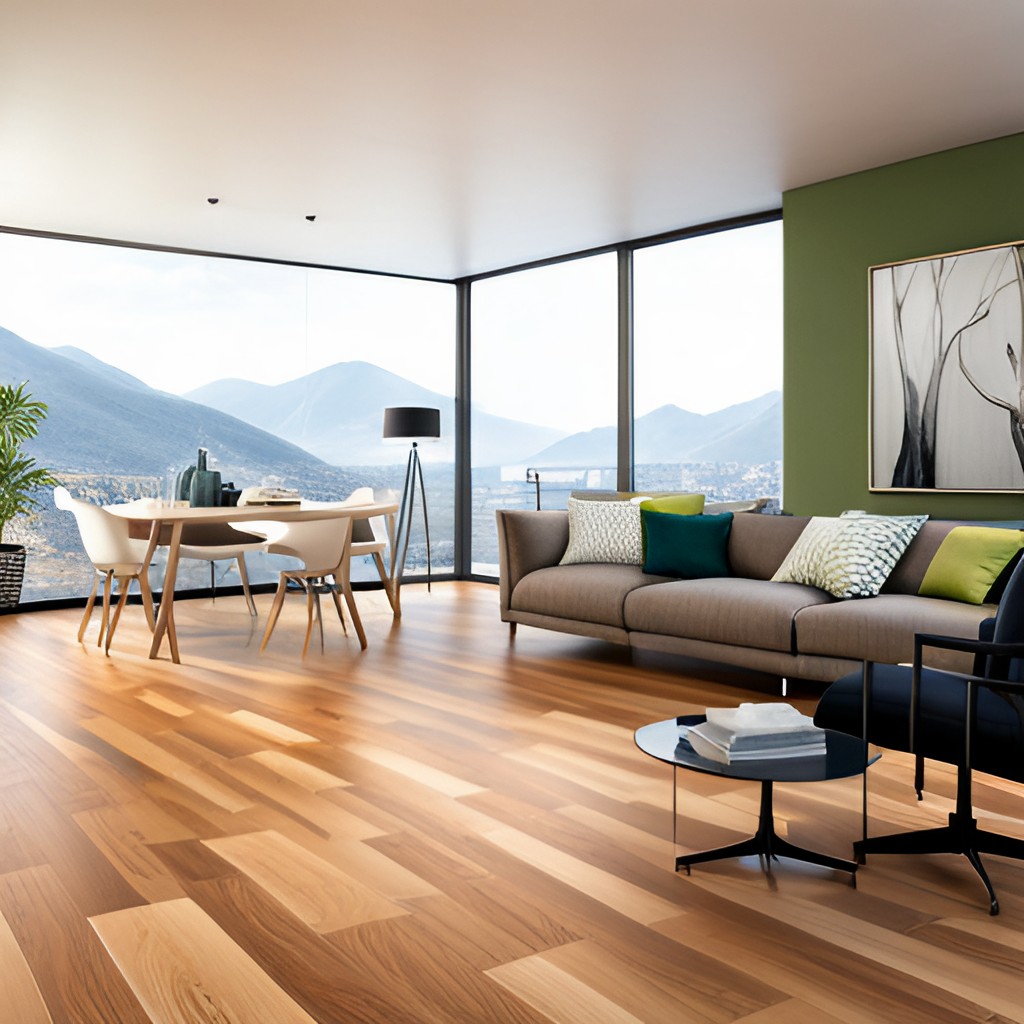
Eco-Friendliness and Certifications
Sustainability in hardwood flooring begins with sourcing the wood from responsibly managed forests.
Look for certifications such as the Forest Stewardship Council (FSC) or the Programme for the Endorsement of Forest Certification (PEFC), which ensure that the wood comes from forests that are replenished and managed with biodiversity and the ecosystem in mind.
Additionally, manufacturers often engage in practices that minimize waste, such as using every part of the tree and incorporating renewable energy sources in their production processes to reduce their carbon footprint.
Impact on Indoor Air Quality
Hardwood flooring can have a significant impact on indoor air quality, and this is largely dependent on the type of finishes and adhesives used. Opting for low-VOC (volatile organic compounds) finishes and adhesives can greatly reduce the emission of harmful chemicals into the air.
Such products adhere to stricter environmental guidelines, ensuring that the air within your home remains free from pollutants that can cause respiratory issues and other health problems.
Moreover, hardwood floors do not trap dust, pet dander, or other allergens, making them a healthier choice for those with allergies or asthma.
Long-Term Environmental Benefits
The environmental benefits of hardwood flooring extend beyond its immediate installation. Due to its durability and the ability to be refinished multiple times, hardwood flooring has a longer lifespan compared to other flooring materials, which means fewer resources are used over time.
Additionally, when they do reach the end of their life, hardwood floors can be recycled or repurposed, reducing waste.
By choosing sustainably sourced and certified hardwood flooring, homeowners not only enjoy the aesthetic and functional benefits but also contribute positively to the environment.
Related Topics:
Conclusion
Selecting the right flooring for your home is a critical decision that influences both the aesthetic appeal and functionality of your space.
With a myriad of options available, understanding the distinct characteristics of each type can help ensure you make an informed choice that aligns with your lifestyle, budget, and design preferences.
Among the popular flooring options, oak and hardwood stand out for their durability, classic beauty, and value addition to the property. This guide has delved into the key differences between oak and hardwood flooring, providing insights to help you determine the best fit for your needs.
FAQs
What is the main difference between oak and hardwood flooring?
Oak flooring is a type of hardwood flooring that specifically comes from oak trees. While all oak is hardwood, not all hardwood is oak. Hardwood flooring can come from various types of trees such as maple, cherry, and walnut, each offering different colors, grain patterns, and hardness levels.
How often can hardwood floors be refinished?
Most hardwood floors can be refinished multiple times over their lifespan. Depending on the thickness of the wear layer, typically, hardwood floors can be refinished up to 5-7 times, allowing homeowners to rejuvenate their flooring without the need for a complete replacement.
Are oak and hardwood floors suitable for high-traffic areas?
Yes, both oak and hardwood floors are durable and can withstand high-traffic areas. Oak is particularly well-known for its hardness and resistance to wear, making it a popular choice for busy households and commercial spaces. Proper maintenance and refinishing can further prolong their lifespan in high-traffic areas.
